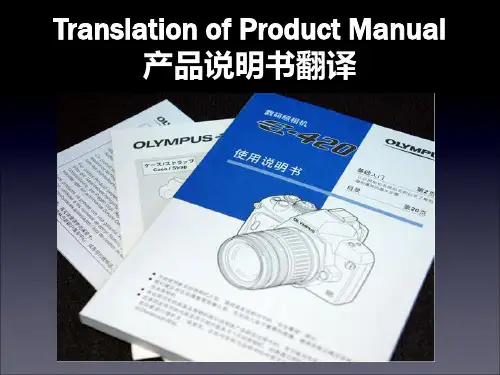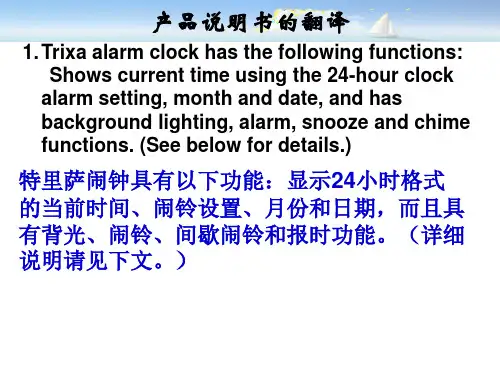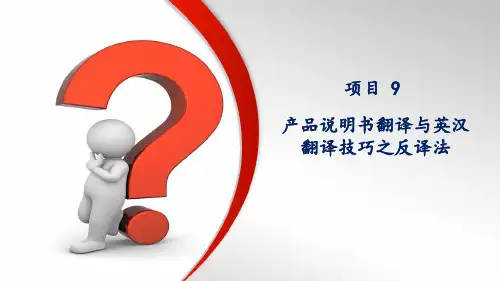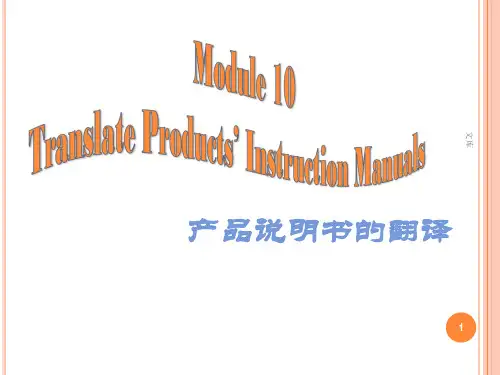9. 产品说明书的翻译解析
- 格式:ppt
- 大小:2.71 MB
- 文档页数:39
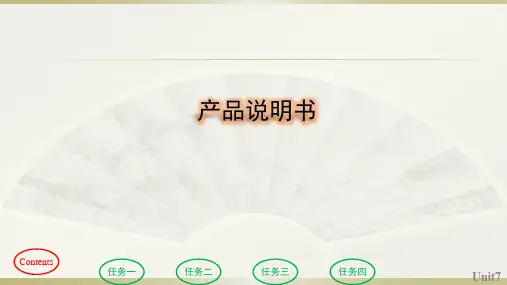
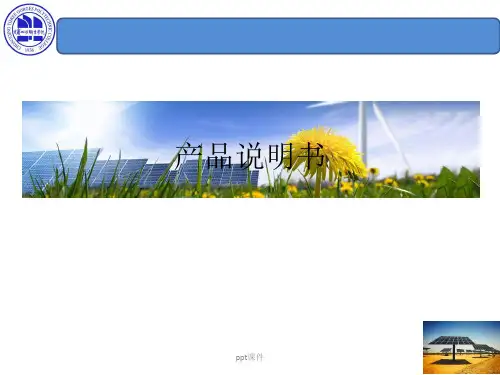
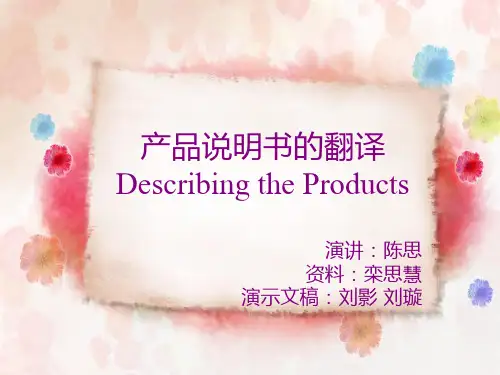
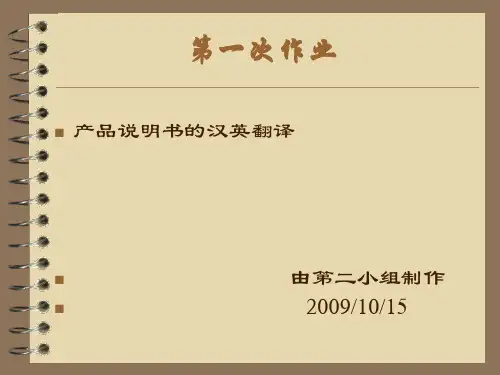
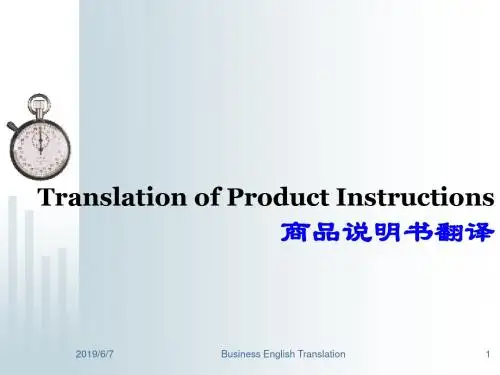
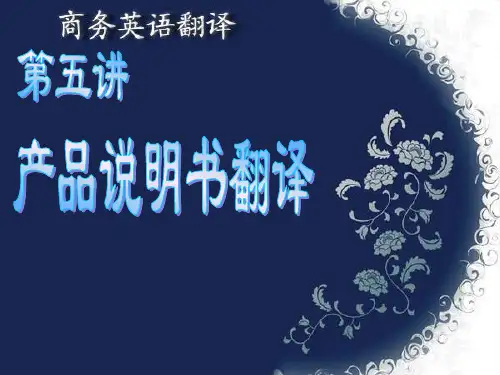
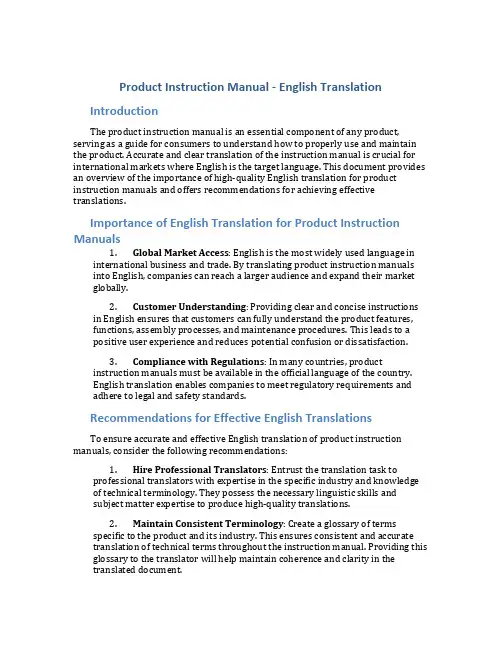
Product Instruction Manual - English Translation IntroductionThe product instruction manual is an essential component of any product, serving as a guide for consumers to understand how to properly use and maintain the product. Accurate and clear translation of the instruction manual is crucial for international markets where English is the target language. This document provides an overview of the importance of high-quality English translation for product instruction manuals and offers recommendations for achieving effective translations.Importance of English Translation for Product Instruction Manuals1.Global Market Access: English is the most widely used language ininternational business and trade. By translating product instruction manuals into English, companies can reach a larger audience and expand their market globally.2.Customer Understanding: Providing clear and concise instructionsin English ensures that customers can fully understand the product features, functions, assembly processes, and maintenance procedures. This leads to apositive user experience and reduces potential confusion or dissatisfaction.pliance with Regulations: In many countries, productinstruction manuals must be available in the official language of the country.English translation enables companies to meet regulatory requirements and adhere to legal and safety standards.Recommendations for Effective English TranslationsTo ensure accurate and effective English translation of product instruction manuals, consider the following recommendations:1.Hire Professional Translators: Entrust the translation task toprofessional translators with expertise in the specific industry and knowledge of technical terminology. They possess the necessary linguistic skills andsubject matter expertise to produce high-quality translations.2.Maintain Consistent Terminology: Create a glossary of termsspecific to the product and its industry. This ensures consistent and accurate translation of technical terms throughout the instruction manual. Providing this glossary to the translator will help maintain coherence and clarity in thetranslated document.3.Consider Cultural Differences: Keep in mind that cultural nuancesmay exist between the source language and English. It is important to ensure that the translated content is culturally appropriate and relevant to the target audience. Understanding the cultural context is crucial in providing accurate translations.4.Simplify Language: Write the original instruction manual in a simpleand clear language. Avoid using complex sentence structures and technicaljargon as they can impede understanding during the translation process.Simpler instructions facilitate accurate and straightforward translations.5.Review and Edit: After the translation is complete, thoroughly reviewand edit the translated content. This helps to identify any errors,inconsistencies, or omissions that might have occurred during the translation process. Editing ensures the final document is accurate and maintains theintended meaning.er-Friendly Presentation: Consider the layout and formatting ofthe translated instruction manual. It should be visually appealing and easy to comprehend. Proper use of headings, subheadings, bullet points, andnumbering enhances readability and user-friendliness.ConclusionAccurate English translations of product instruction manuals are crucial for successful product usage, customer satisfaction, and global market access. By following the recommended guidelines, companies can ensure that their products are effectively communicated to English-speaking customers. A well-translated instruction manual enhances user experience, reduces potential risks associated with product misuse, and fosters a positive brand image in the target market.。
